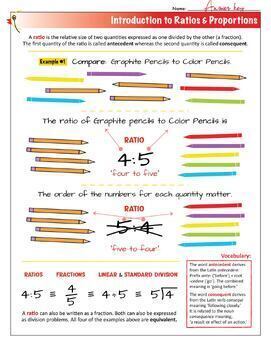Ratios & Proportions BUNDLE: Equivalent & Similar, Scale Factors & Word Problems
- Zip
Products in this Bundle (4)
Description
Ratios & Proportions BUNDLE: Equivalent & Similar, Scale Factors & Word Problems • VETERAN Montessori-inspired printable Math help (10 pages + key, 40 Word Problem Cards & Steps to SolvingWord Problem Guide):
Explore the basics of ratios and proportions. These pages guide young mathematicians to:
- Practice calculating missing antecedents and/or consequents
- Discover scale factors & similarity, how to calculate them and how to apply them
- Practice converting word problems into simple math problems
- Visualize example ratio problems using the Montessori Peg Board material
- Use domain-specific phrases and learn Mathematical Terminology such as: Antecedent, consequent, equivalent, similar, scale factors, and proportional.
- Steps to Solving Word Problems Guide is also included!
What exactly are ratios and proportions? A ratio is the relative size of two quantities expressed as one divided by the other (a fraction). The first quantity of the ratio is called antecedent whereas the second quantity is called consequent. Practice calculating missing antecedents and/or consequents. Discover scale factors, how to calculate them and how to apply them.
Use domain-specific phrases and learn Mathematical Terminology such as: Antecedent, consequent, equivalent, scale factors, and proportional. Ratio examples using the Montessori Peg Board material are included!
Do you like the Ratios & Proportions BUNDLE: Equivalent & Similar, Scale Factors & Word Problems? Please consider other Fractions, Decimals & Percentages Learning Resources from Grumble!
Money BUNDLE: Decimals, Percents, Ratios, Rounding Rules & Word Problem
Understanding Fractions BUNDLE: Equivalent, Operations, Conversion, Word Problems
Looking for High Quality, Professionally Designed Elementary Learning Resources? Look no further - FOLLOW GRUMBLE! Although the word Montessori is in the title, ANY type of elementary student will benefit from independent, self-directed learning.
As stated in the Teachers Pay Teachers refund policy, “all sales on TpT of digital resources are considered final and nonrefundable.” Please ask any questions you have about this product before purchasing. Thank you! © 2020-2024 Grumble Services, LLC. • All rights reserved.
Dr. Maria Montessori believed the only way our world would find lasting peace was through educating our children. Much of her elementary curriculum was written by her during a period of internment in India during WWII. This time period helped solidify Dr. Montessori’s belief in Peace Education.
Resource Color Guide (just like the Montessori hierarchical colors):
ROOKIE Pages (Green) - Aimed toward early to mid level elementary students.
SEMiPRO Pages (Blue) - Aimed toward mid level elementary students.
VETERAN Pages (Red) - Aimed toward mid to late level elementary students.
But of course, you know the child best, so adjust accordingly.
In the words of Dr. Montessori, "Follow the Child!"





